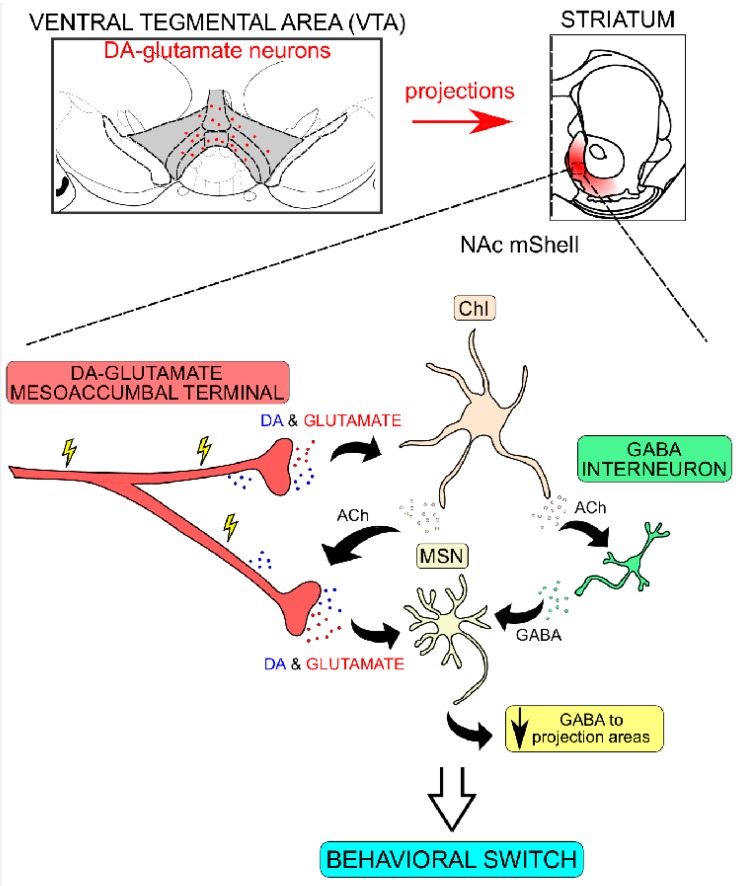Figure 9.
Simplified schematic model of down-stream neurocircuitry effects upon dopamine (DA)–glutamate co-release in the ventral striatal area leading to behavioral output. DA–glutamate co-releasing neurons (red) are located primarily in the medial part of the ventral tegmental area (VTA; gray) from where they project to the nucleus accumbens medial shell (NAc mShell). Burst-firing of these neurons leads to a release of DA and glutamate from mesoaccumbal nerve terminals which subsequently act on DA and glutamate receptors located on cholinergic interneurons (ChIs) and medium spiny neurons (MSNs) in the NAc mShell. DA and glutamate neurotransmission via receptors located on ChIs leads to synchronized activity and acetylcholine (ACh) release. ACh subsequently acts on ACh receptors located in VTA presynaptic terminals to further increase neurotransmitter release. DA and glutamate release, together with increased release of GABA from GABAergic interneurons, also leads to inhibition of the GABAergic MSNs, which in turn leads to disinhibiton of target areas and allows for the occurence of behaviors associated with alternative strategies to obtain reward, a “behavioral switch”. Drawing based on original illustration by Mingote et al., 2019 [44].

